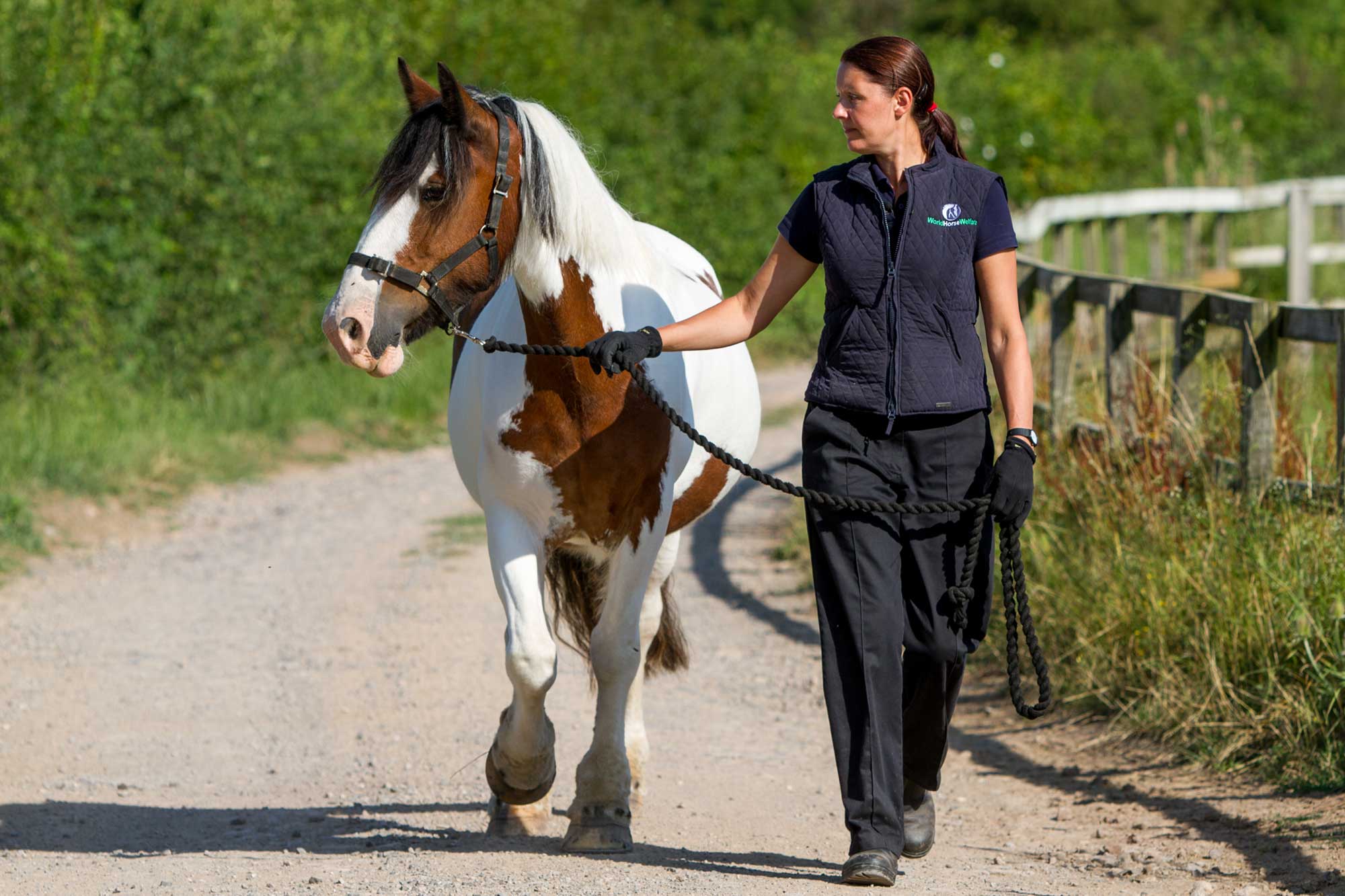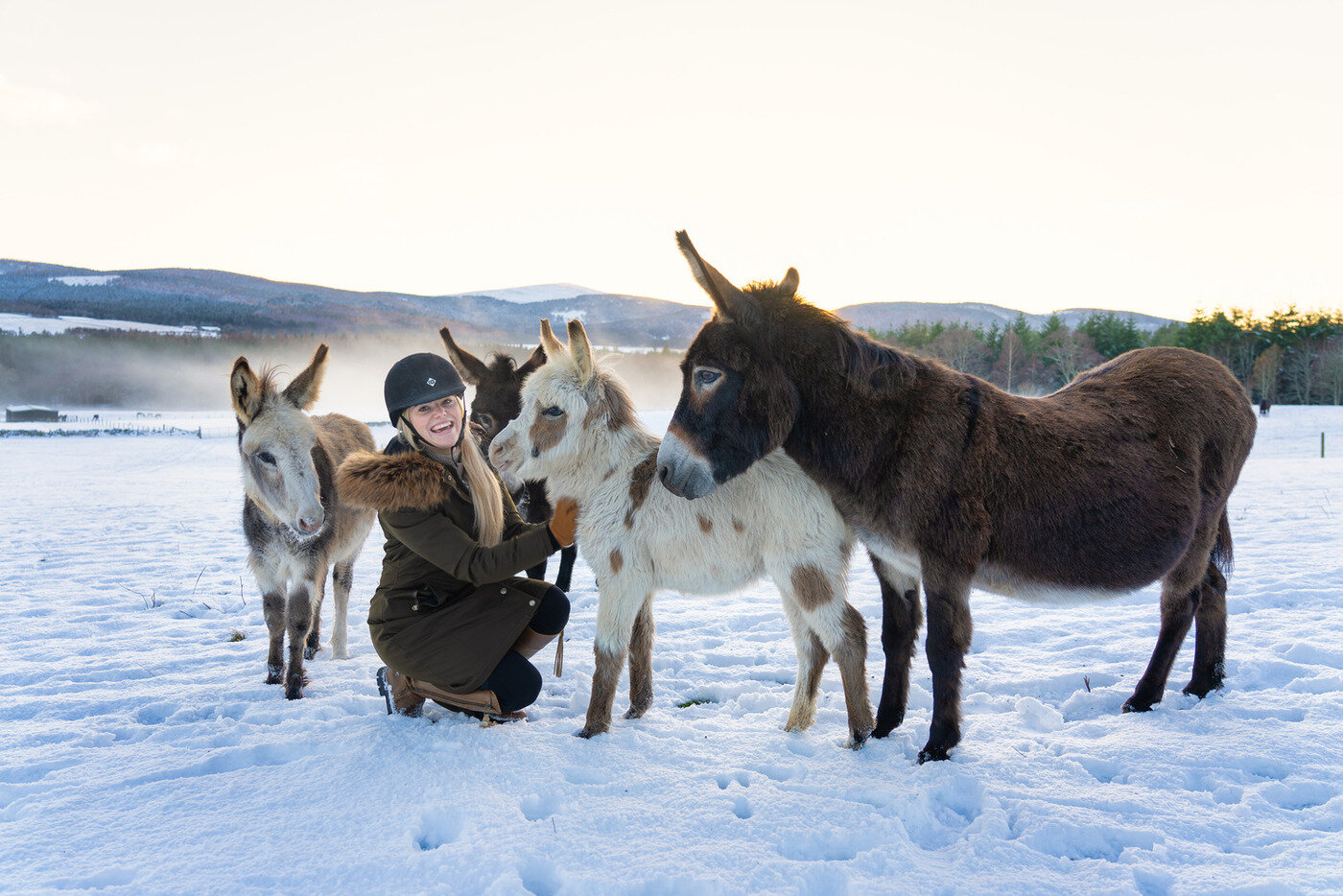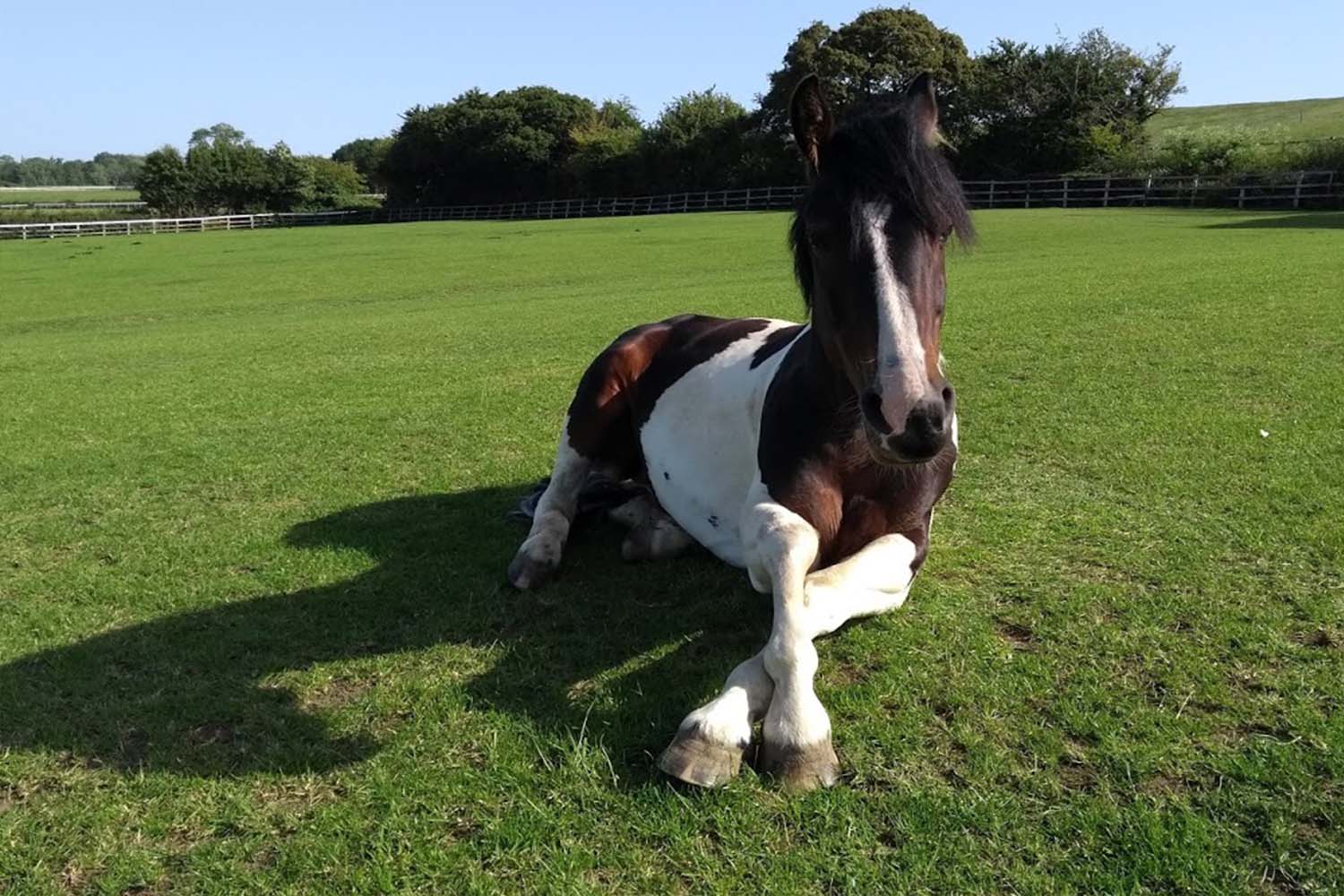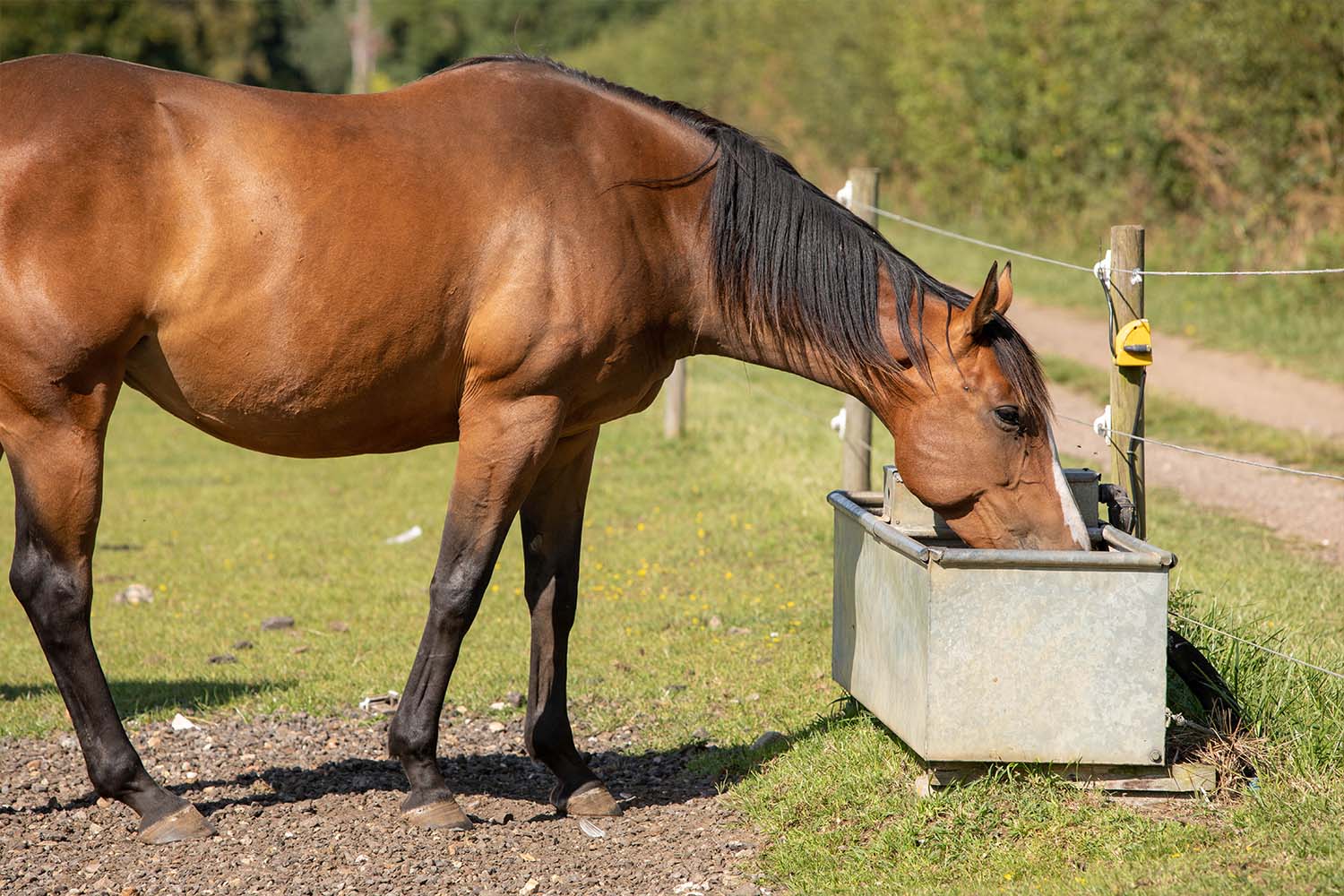Top tips and practical advice on managing your horse’s weight to keep them healthy
Assistant Centre Manager Sara Jerman explains practical ways to manage your horse’s nutritional intake and keep them at a healthy weight.
Posted on 28/08/2020

With such a wide variety of horses and ponies in our farms, we’re very aware that the first thing to think about when managing your horse’s weight is their breed and their grazing needs – a 16hh TB will usually have very different requirements than a Shetland Pony or even a small cob! It’s easy to think a small pony will make a great companion for a bigger horse, but this can make life really difficult when trying to manage their grazing requirements at the same time.
There are numerous ways you can manage your grazing to help keep your horse at a healthy weight, including dividing large fields into smaller paddocks (although you do need to be mindful of restricting their ability to burn calories by moving around if you choose this option). Strip grazing can be very useful, especially when introducing horses onto fresh grass, and has the advantage of encouraging more movement than small paddocks. Track systems are becoming increasingly popular and, whilst you can invest a significant amount of time, effort and money into creating a high spec permanent track system if you choose to do so, you can also make a simple track system in your existing paddock using electric tape and posts.
If you choose to use a grazing muzzle, make sure to introduce it gradually to give your horse a chance to get used to the idea before being turned out with one on. Once you reach the stage of being able to turn him or her out with the muzzle on, build the time up gradually to no more than 10-12 hours per day. Horses can gorge on grass when their grazing muzzle comes off so you may need to think about where your horse is spending their time when they’re not wearing a muzzle. You also need to consider the length of your grass – if it’s very short your horse won’t be able to get any grass with a muzzle on and if it’s quite long it may bend over and prevent them from being able to get to the grass that way.
It’s worth getting a grass and/or hay/haylage analysis done so you know exactly what you’re working with – particularly during the spring and summer months it’s very possible that your horse will get more calories than they need from grass alone. The results may also show that your hay contains more sugar than expected, in which case soaking it for 12 hours is a great way to lower the calorie content. If restricting your horse’s calorie intake you may need to consider giving your horse a feed balancer or broad spectrum vitamin and mineral supplement to ensure that they’re not deficient in important nutrients, particularly if they’re getting soaked hay.
When you’re working out your horse’s daily total feed ration you should work on about 2-2.5% of their ideal bodyweight. Rarely, in cases when there is a greater need for weight loss, the ration may be reduced down to 1.5% of your horse’s bodyweight but this should only be done under veterinary supervision. If your horse is overweight it might be tricky to work out their ideal weight, so do ask your vet’s advice. Please don’t ever “crash diet” your horse – this can be really dangerous for them as well as counterproductive for weight loss.
Horses have a natural psychological drive to chew and it’s really important that this need is met to prevent them developing any unwanted behaviours such as crib-biting or weaving. Fibre takes time to chew and in the wild horses would spend around 75% of their time chewing. Small-holed haynets mean that your horse will take longer to eat their forage, creating a trickle-feeding effect. If you’re providing hay or haylage, ideally this should be split into several meals a day to make sure they are never without forage for long periods of time.
Exercise can also be a great way to help manage your horse’s weight – even if they can’t be ridden/driven, taking them for a brisk 30-minute walk in-hand can be really beneficial. Ideally you need to get their heartrate up to around 80bpm – so think of walking like you don’t want to miss the bus! Another benefit of in-hand work, such as horse agility, is that it can really help you build a bond with your horse – plus it’s often suitable for youngsters and veterans as well, any medical issues notwithstanding.
Seasonal weight variations can be used to your advantage – losing weight over the winter is an entirely natural thing for horses to do. You can use this to help you get some weight off your horse before the spring grass comes through, which should make things easier to manage throughout the warmer months. If your horse comes out of winter with a Body Condition Score (fat score) of around 2.5 out of 5 you’re in a much better position to keep them at a healthy weight even if they do gain a bit during the spring and summer months. Clipping can be used as a useful weight management tool in winter and most ponies can still live out with some form of clip, such as a neck, belly or low trace clip, without a rug on.
Horses have the ability to thermoregulate naturally, which means that they can maintain a comfortable body temperature even when the outside temperature is very different. The temperature range within which they can do this is known as their thermoneutral zone – and horses have a much wider thermoneutral zone than we do. Our thermoneutral zone when at rest and wearing light clothing is between 25-30C, but the average horse is comfortable between 5-25C when at rest – so please don’t rug your horse just because you’re feeling cold! Some shivering is a normal body function but excessive shivering, standing in a corner with hunched quarters and being reluctant to move can all be signs that your horse is cold.
On a dry, still day the average horse won’t feel the cold until the temperature drops below 5C and this can be even lower if you have a horse or pony with a really thick coat such as a native type. It can be very helpful for weight management for horses to feel a bit cold occasionally as this encourages them to keep themselves warm, whether through low-level shivering or moving around the paddock, which helps to burn calories. Again, all horses are very much individuals and the lower end of their thermoneutral zone will vary depending on their breed, age and whether they’re clipped or not. Wet, windy conditions without shelter will make your horse feel colder, even if the temperature is between 5-25C. If your paddock doesn’t have much shelter, you may need to consider a lightweight rain sheet, especially for horses who are young, old or particularly thin, but do adapt this as soon as conditions change. The vast majority of our horses and ponies, even at our Belwade Farm Rescue and Rehoming Centre in Aberdeenshire, will comfortably live out all year round without a rug on.
If you’d like further advice on managing your horse or pony’s weight do give us a call in office hours on +441953 497238 and our team will be very happy to help.
Topics
Related Blog Posts

Plan for an emergency when you’re not around – help us to help your horse
Deputy Chief Field Officer Jon Phipps has top tips for owners on making plans just in case your horse injures themselves when you’re not there.

How to help a needle-shy horse overcome their fear
Grooms Amy and Emily explain how they work with horses who are nervous with needles before a visit from the vet.
Recommended News Articles

Little donkeys shine a light on our Christmas appeal
Abandoned donkey Mia and her foal Peanut take centre stage this Christmas.

Helping to heal people comes naturally to a rescue horse
Rescued and recovered horse, Paddy, now has an important therapy role
Enjoy reading stories like this?
Join over 55,000 other horse lovers and sign up for our email newsletter

Join over 55,000 other horse lovers and sign up for our email newsletter
Sign me up now
